By Mohanapriyan Thavarajah From the travel diaries, here is a first person experience of witnessing the art of Yakshgana and tracing its origin at the Yakshagana village at Karnataka. Mohanapriyan Thavarajah fondly retells, “In the village, I witnessed not only tradition, art, hospitality but also love for humanity. The more I travel, the more I dance, the more I fall in love.”
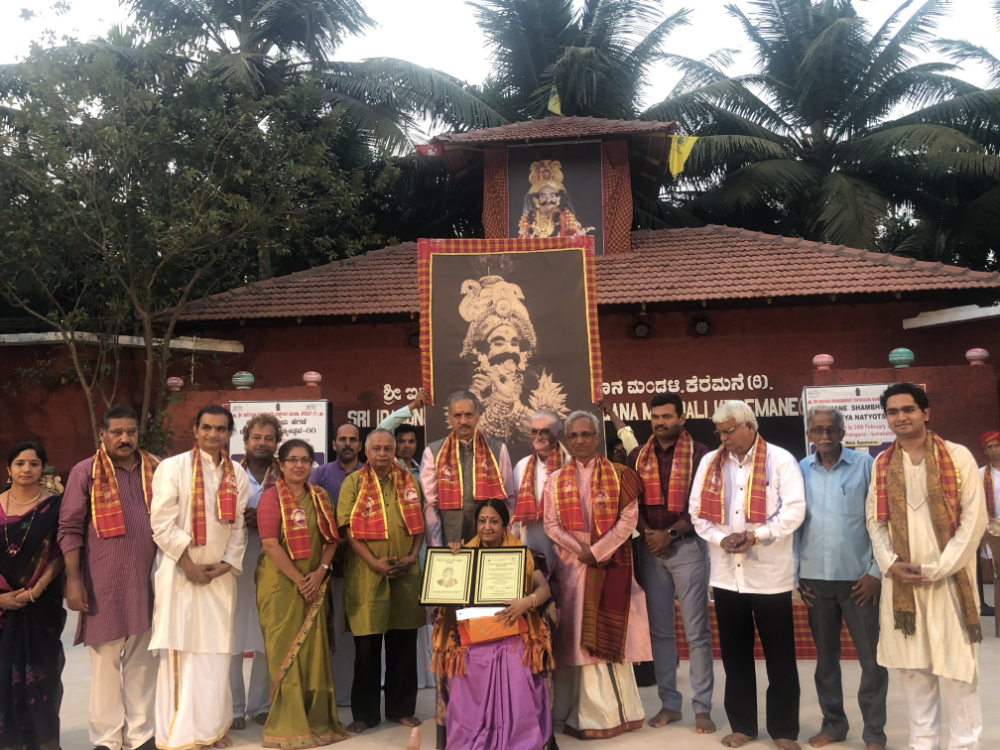
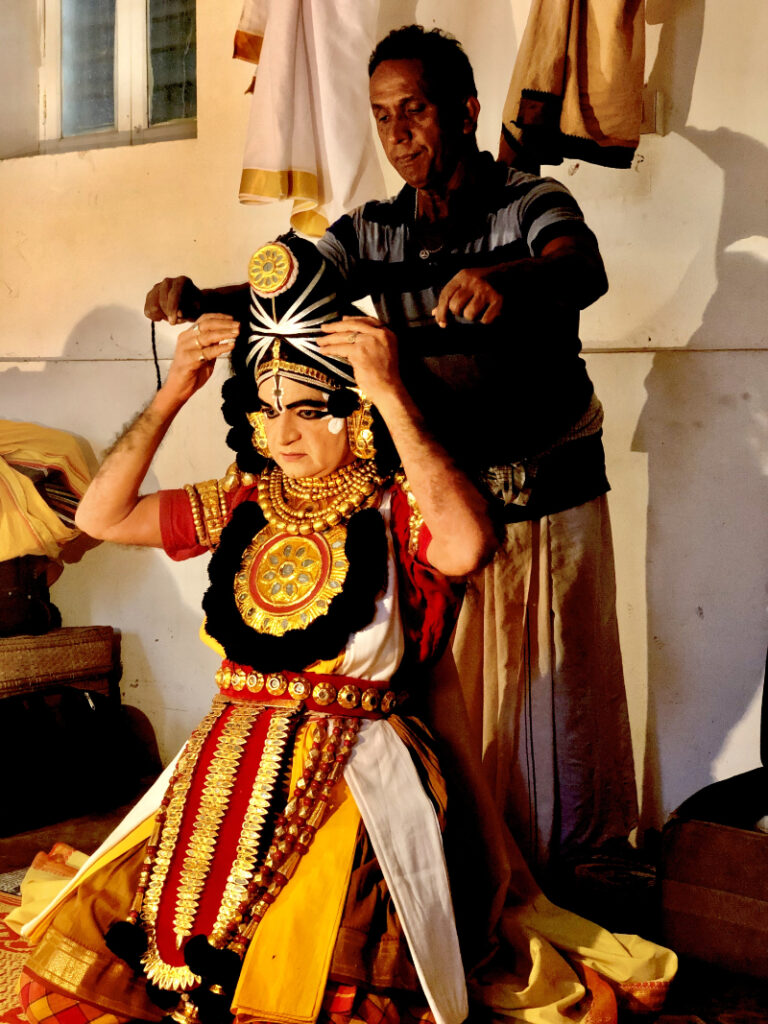
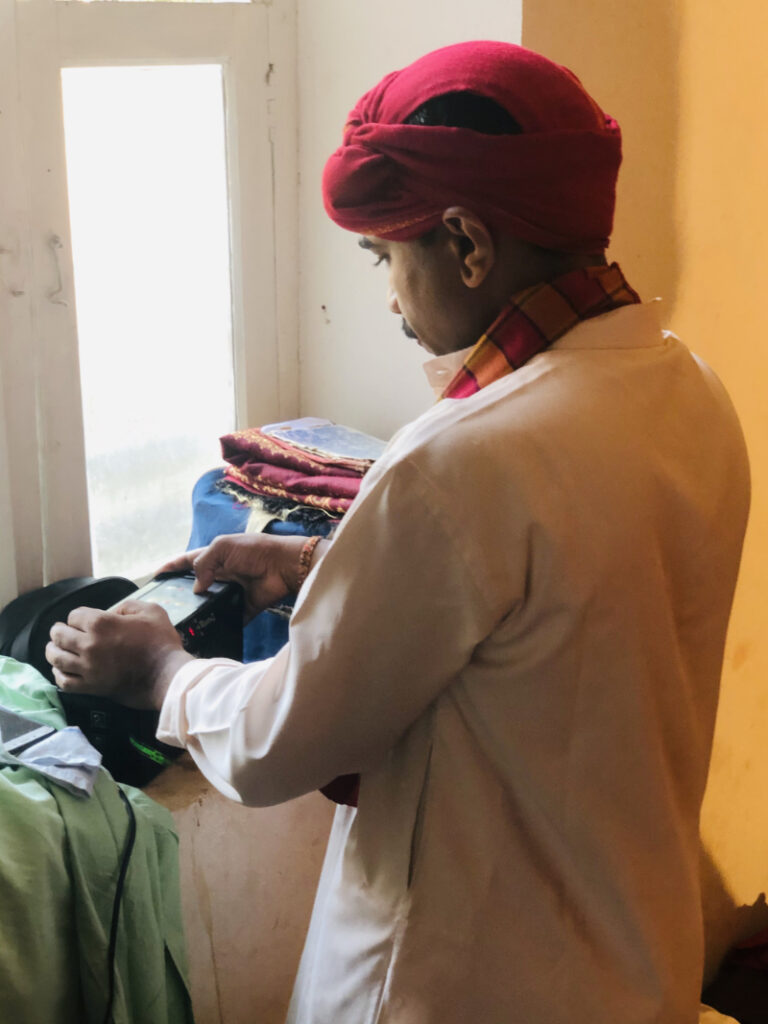
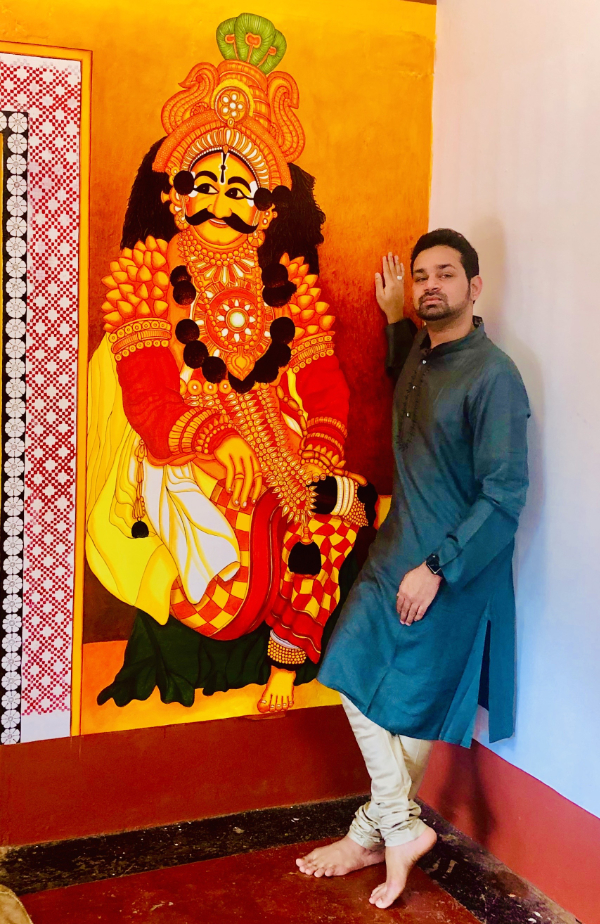
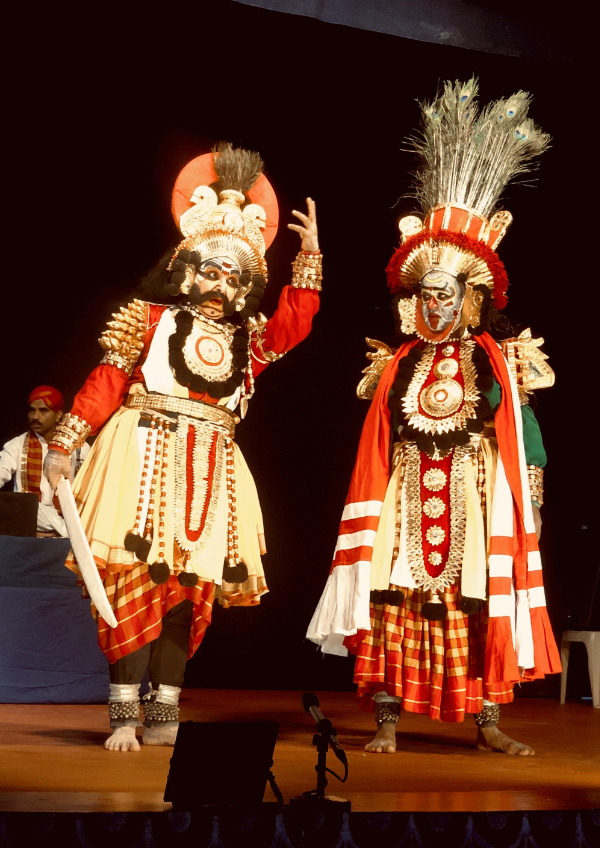
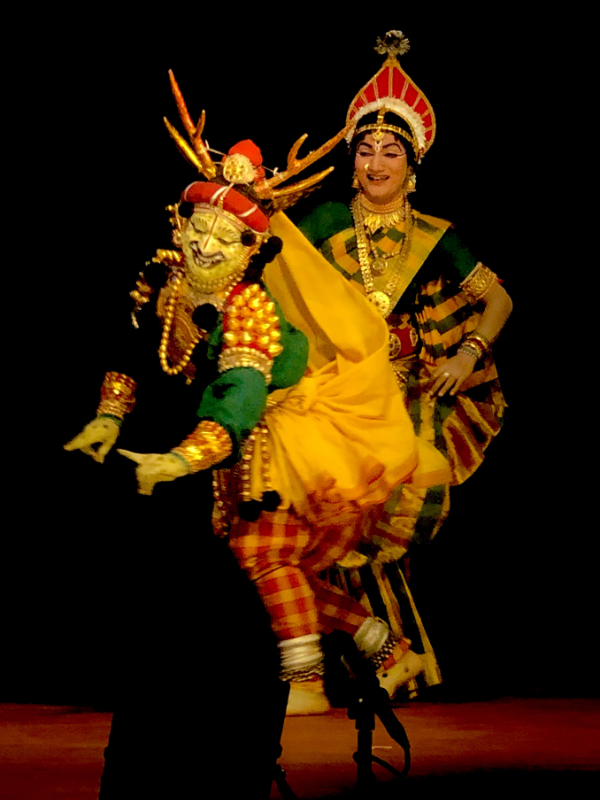
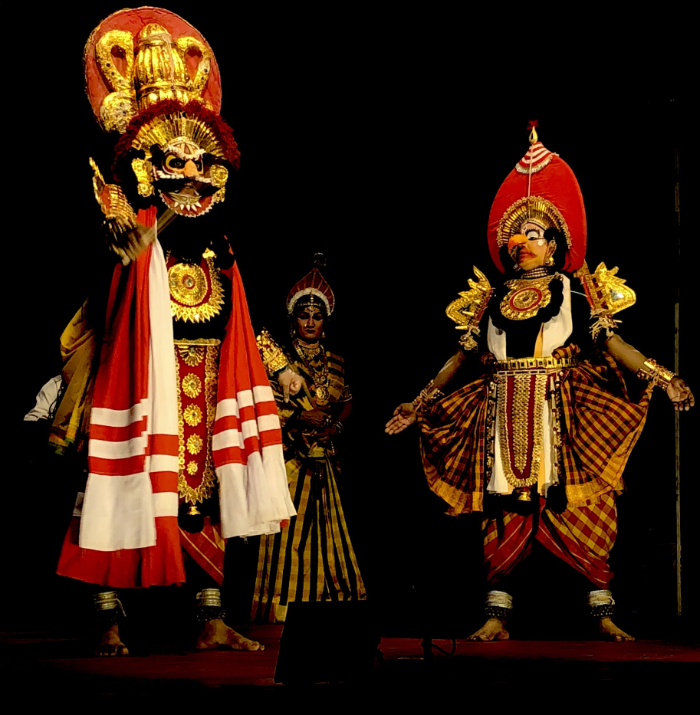
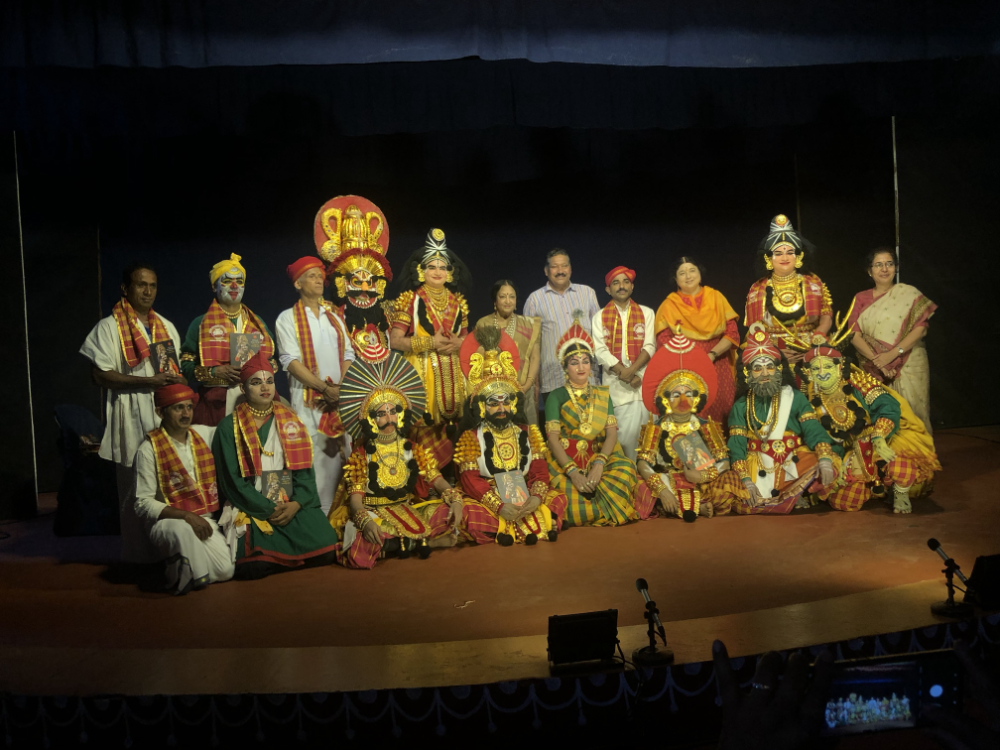
Yakshagana is a theater form of Karnataka (India) that combines dance, music, dialogue, costume, make-up, and stage techniques with a unique style and form to depict stories of the Indian Hindu epics and mythology. This theatrical style, resembling Western opera, is mainly found in the Coastal districts and the Malenadu region of India. Yakshagana is traditionally presented from dusk to dawn. Yakshagana was evolved centuries ago as a theatre art and education to rural mass of India.The tradition of presenting a narrative through mime, gesture, dance, choreography, song, décor and music as a single Dance-Drama has its roots in Natya Shastra. Depending upon the song, actors compose appropriate dance movements followed by impromptu dialogues.Yakshagana has attracted people from all walks of life and all sections of the society irrespective of caste and religion. It is a befitting response for a form of art that upholds humanitarian values. Protected for hundreds of years in remote villages of Karnataka, it is now taking finer shape in the modern world. Yakshagna has mainly been classified into two forms namely Badagu and Tenku tittu (Styles) unique to northern and southern parts of the coastal regions respectively. The performing troupe is called Mela or Mandali which is a traditional repertory and travels from place to place. I had an amazing performance tour experience of travelling to Yakshagana village where the Yakshagana traditional art form has been practised for almost seven generations now. It was a day long trip from Singapore – Chennai – Mangalore to Yakshagana Village. It took four hours to drive from Mangalore Airport to reach this village in the interiors of Karnataka. The serene space of a Gurukulam gives the feel of the rustic experience of the olden days which is rare in today’s practice of Indian art forms. In the hereditary lineage, the art form of Yakshagana was initiated by Late Sri Keremane Shivarama Hegde in 1934. Shivananda Hegde is the sixth generation in the family lineage and the director of Sri Idagunji mahaganapati Yakshagana Mandali – a heritage institution in the village, that provides Gurukula training in Yakshagana. I recall that Sri Shivanada Hegde and his Mandali were invited to perform at the Esplanade theatre for the Kalaa Utsavam Indian arts festival in 2012. During that time I had just arrived at Singapore to work with Apsaras Arts on a children’s production commissioned by Esplanade theatre for the same festival. I was able to watch almost every show including the Yakshagana performance at the outdoors theatre. It was my first ever experience watching a Yakshagana performance. I was mesmerised by the performance and remember taking multiple photos and the sound of thundering applause from the audience in appreciation for the amazing performers. After seven years I was able to witness their performance once again at the Madras Music Academy as part of their annual festival in January 2020. Later, It was a great honour to receive an invitation by Shivanada Hegde to dance at his annual Yakshagana festival. The trip to Yakshagana village became very special as I was accompanied by the legendary Dr Padma Subramaniam, her nephew veena mastro Kannan Balakrishnan and our Artistic Director Aravinth Kumarasamy. After the day long trip we finally reached the village around 8.30pm. It was a buzzing festival with many line up of performances starting at sunset in an outdoor theatre setting. The natural smoke from herbs was kept to ward off the mosquitoes, but I hardly remember being disturbed by any insect bites as I was completely immersed into the performances throughout the night. On the second day we had the great privilege to witness an exclusive Yakshagana performance “Sita Aparahan” – the abduction of Sita performed by brilliant artists of Sri Idagunji mahaganapati Yakshagana Mandali proudly led by the director Sivanada Hegde. They performed in the presence of Dr.Padma Subramaniam, who was honoured that evening with a Lifetime achievement award. The performance was by the most celebrated artistes and they truly lived the Ramayana characters on stage. One of the best performances to remember not just because they are excellent artistes, but for their artistry in bringing drama, music, dialogue, dance and tala patterns together in one place. Dr. Padma Subramaniam had mentioned in her speech that they have performed truly a Bharatha Naatyam bringing out the core principles of Bharatha’s Natya Sastra in their Yakshagana performance. I was emotionally inspired and savoured every single movement that brought goosebumps and touched my senses in rasanubhava. Perhaps my mind and body was sated by the Kashayam – a medicinal herbal drink, which was served to the audience at the start of the performance. Apparently this drink is usually served to detoxify the body and good for health instead of hot chai or filter coffee. After the performance I was eagerly waiting to meet the artists to greet and thank them but they just disappeared to the green room for their prayer. Praying before and after performance has been their practice initiated by their forefathers and has been practiced by the generations of artists even till today. They would offer their crowns and instruments at the prayer to seek the divine’s blessings. This performance of Yakshagana reaffirms the faith that the traditional art forms of India continue to play an important role in keeping alive our rich legacy of storytelling, of epics, of maintaining the traditional form even as they are adapted to new ideas more suited to the contemporary milieu. As many we all know that India is a country that brings the diversity of culture, language and food. A team was dedicated to cook simple nutritious local food like rice, sambar, rasam and sweet which was served for the entire public gathered in the festival. I came to know that people travelled from the nearby villages to witness the Yakshagana festival every year therefore they simply looked after them as guests with refreshments and food. In the village, I witnessed not only tradition, art, hospitality but also love for humanity. The second day evening was the closing night of the festival for which I gave an hour long performance at the outdoor theatre. It was almost 11.15pm in the night and the audience did not move an inch from their seats. The energetically charged cool breeze, the audiences who were pure art lovers, and it was my unforgettable experience to perform at this sacred space. I was also surprised to notice that the young generation, in particular, boys were also there in large numbers appreciating the performances. One of the unexpected experiences that, while the other artistes occupied the theatre green rooms i was given Yakshagana Artiste’s green room to get dressed and often the little boys from the village would run into the green room and try on the jewellery and crowns of Yakshagana artiste’s. They would ask me “Are you going to perform Yakshagana ? No ? We are learning Yakshagana”. I was amazed how the art form is part of their rich heritage life and it was not at all optional to them or rather not forced to inherit in their life and they are proud of it. It has been a gratifying experience performing at this festival and the unexpected visits to the temples of Mrutheeshwarar and Udupi Krishna, concluded this trip on high spiritual note. The more I travel, The more I dance, The more I fall in love.









